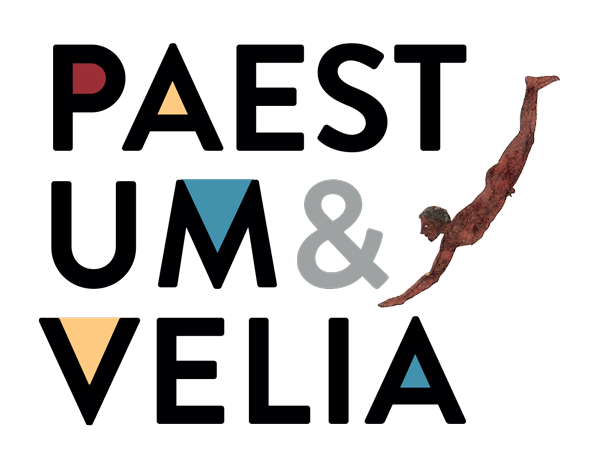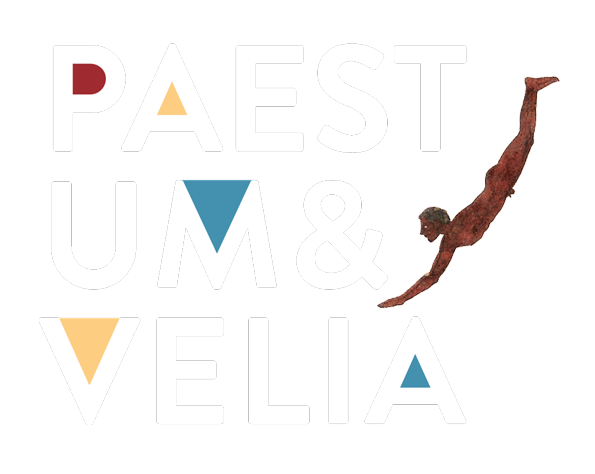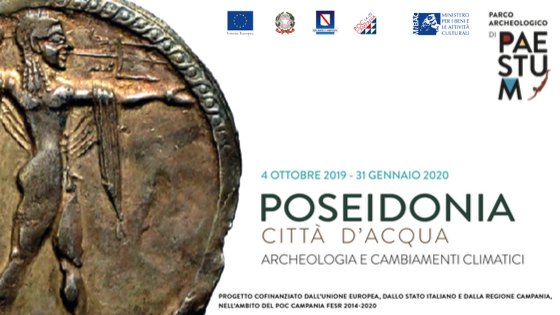
Poseidonia, water city: archaeology and climate change is a new exhibition at the twice UNESCO listed Heritage site of Paestum on the Tyrrhenian Sea south of Salerno, internationally famous for its three outstanding Greek Doric temples and its tomb fresco (discovered in 1968), The Diver (il tuffatore). Located in the Museo Archeologico Nazionale di Paestum, and supported by artist Alessandra Franco’s extraordinary video installation, Metamorfosi, projected onto the temple of Neptune, Poseidonia is an exhibition that goes behind the science to put the latest climate change scenarios in dialogue with past human achievement, present environmental crisis and future human ingenuity.
Poseidon, for whom the ancient Greek settlement is named, presides over water and earthquake, over creation and destruction: how will citizens of today and the future reconcile these forces? Drawing on new research into the formation of the Paestum landscape, exhibiting a new generation of archaeological findings and using the combined insights of scholars and artists to inspire the next generation, Poseidonia aims to show how, in a time of acute environmental threat, remembering the past helps us shape a sustainable future. The ‘water ambassadors’ emerging from the collaboration between the Museum and the Giffoni children’s film festival will be a practical contribution to regional growth and cultural resilience.
‘Human-induced environmental change goes back 5000 years,’ says Gabriel Zuchtriegel, director of the Paestum Archaeological Park and co-curator, together with Paul Carter and Adriana Rispoli, of Poseidonia, ‘and the rise and fall of Paestum (largely abandoned after the Roman period) shows this. But nothing can compare with the scale and rapidity of sea-level rise, desertification and societal stress we face today. This is not fake news, and instead of attacking those who, like Greta Thunberg, courageously bear witness to the truth, we should learn the lessons of the past and, separating creativity from self-destruction, reinvent ourselves, our institutions and our stories.’
Poseidonia not only reaches out to understand a Mediterranean future through the lens of a Greek colonial past: the exhibition curators also reach in to the Museum’s collections. In a remarkable fusion of archaeology, art and design, the exhibition’s showcases make reference to the fountain of six columns designed by Neapolitan artist, Carlo Alfano, in 1972, as a homage to The Diver, and located adjacent to the famous fresco. The Diver shows a figure suspended between earth and water, like Paestum itself. Poseidonia ties memory to imagination and invention: ‘Unite behind the science was the slogan of the Fridays for Future climate strikes,’ Zuchtriegel explained during the opening of the exhibition, ‘The theme of climate change is so important and complex that we cannot leave it to science: art, literature, cinema and the human sciences can and must contribute to public discussion and awareness.’
In her contribution to the exhibition catalogue (itself a must read for all educators), well-known writer Andrea Marcolongo goes back to the beginning to point us to the future. Recalling Homer’s prophecy that Ulysses would not find peace until he gave up the sea, travelled inland to an unknown and uncontaminated country, and finally made sacrifice to Poseidon, she invites us to think of a new return, one that seeks reconciliation with the environment: the new companions of Ulysses committed to a new kind of homecoming are all of us, citizens, friends and children. Paestum is also our destination. Poseidonia, water city is a collaboration between the Archaeological Park (MiBACT) and the CMCC (Euro-Mediterranean Foundation on Climate Change), made possible by the generous financial support of the Campania regional administration. The exhibition runs until 31 January 2020.
The press folder can be downloaded at the following link: https://drive.google.com/drive/folders/1y7l7b2VauuGbbUkBoaee2Y1wXX3EfCS8
Info:
Title: “Poseidonia water city. Archaeology and climate change”
Date: 4 October 2019 – 31 January 2020
Location: National Archaeological Museum of Paestum
Daily (excluding Mondays) from 8:30 a.m. to 7:30 p.m. (last ticket 6:50 p.m.).
The visit to the exhibition is included in the entrance ticket to the site, the annual Paestum Mia ticket and the Adopt a Block card.
Website: http://poseidonia-citta-dacqua.eu







